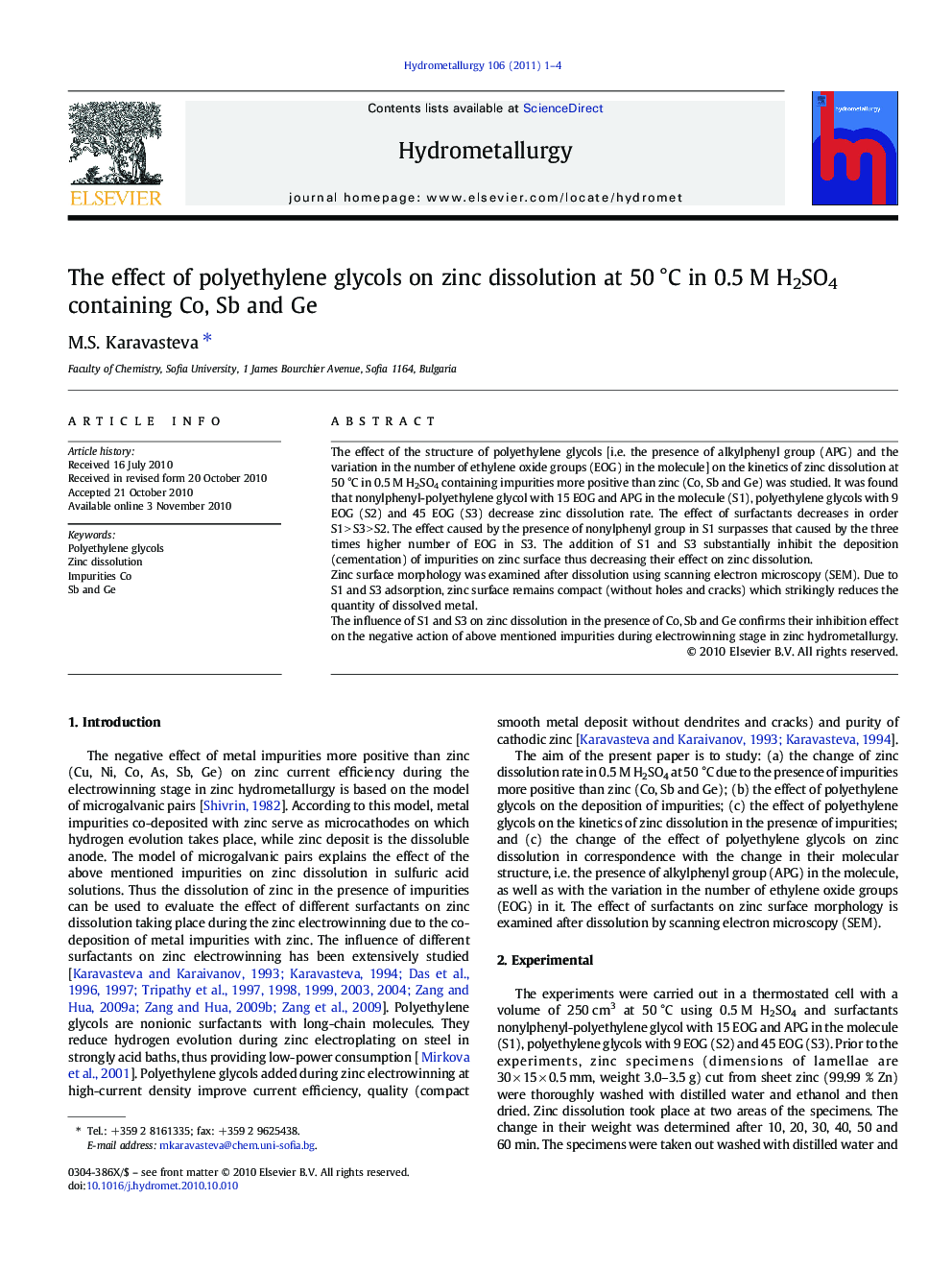| کد مقاله | کد نشریه | سال انتشار | مقاله انگلیسی | نسخه تمام متن |
|---|---|---|---|---|
| 212849 | 462070 | 2011 | 4 صفحه PDF | دانلود رایگان |

The effect of the structure of polyethylene glycols [i.e. the presence of alkylphenyl group (APG) and the variation in the number of ethylene oxide groups (EOG) in the molecule] on the kinetics of zinc dissolution at 50 °C in 0.5 M H2SO4 containing impurities more positive than zinc (Co, Sb and Ge) was studied. It was found that nonylphenyl-polyethylene glycol with 15 EOG and APG in the molecule (S1), polyethylene glycols with 9 EOG (S2) and 45 EOG (S3) decrease zinc dissolution rate. The effect of surfactants decreases in order S1 > S3 > S2. The effect caused by the presence of nonylphenyl group in S1 surpasses that caused by the three times higher number of EOG in S3. The addition of S1 and S3 substantially inhibit the deposition (cementation) of impurities on zinc surface thus decreasing their effect on zinc dissolution.Zinc surface morphology was examined after dissolution using scanning electron microscopy (SEM). Due to S1 and S3 adsorption, zinc surface remains compact (without holes and cracks) which strikingly reduces the quantity of dissolved metal.The influence of S1 and S3 on zinc dissolution in the presence of Co, Sb and Ge confirms their inhibition effect on the negative action of above mentioned impurities during electrowinning stage in zinc hydrometallurgy.
Research Highlights
► Surfactants nonylphenyl-polyethylene glycol with 15 ethylene oxide groups (EOG) and alkylphenyl group (APG) in the molecule (S1), polyethylene glycols with 9 EOG (S2) and 45 EOG (S3) decrease zinc dissolution in 0.5 M H2SO4 containing Co, Sb and Ge.
► The effect caused by the presence of APG (S1) surpasses that caused by the three times higher number of EOG (S3).
► S1 and S3 substantially inhibit both the deposition of metal impurities on the zinc and the hydrogen evolution.
► The influence of polyethylene glycols on zinc dissolution in sulfuric acid containing Co, Sb and Ge is a confirmation that these surfactants inhibit the negative action of impurities during zinc electrowinning.
Journal: Hydrometallurgy - Volume 106, Issues 1–2, February 2011, Pages 1–4